Key takeaways
- Socratic questioning fosters critical thinking and deeper understanding by encouraging students to challenge assumptions and engage in collaborative dialogue.
- Key techniques include asking open-ended questions, gently challenging beliefs, and actively listening to create a respectful learning environment.
- Engaging students involves encouraging them to build on each other’s ideas and being mindful of pacing to allow for thoughtful reflection.
- Overcoming challenges in Socratic dialogue requires creating a safe space for exploration, managing conversation flow, and being patient during moments of uncertainty.
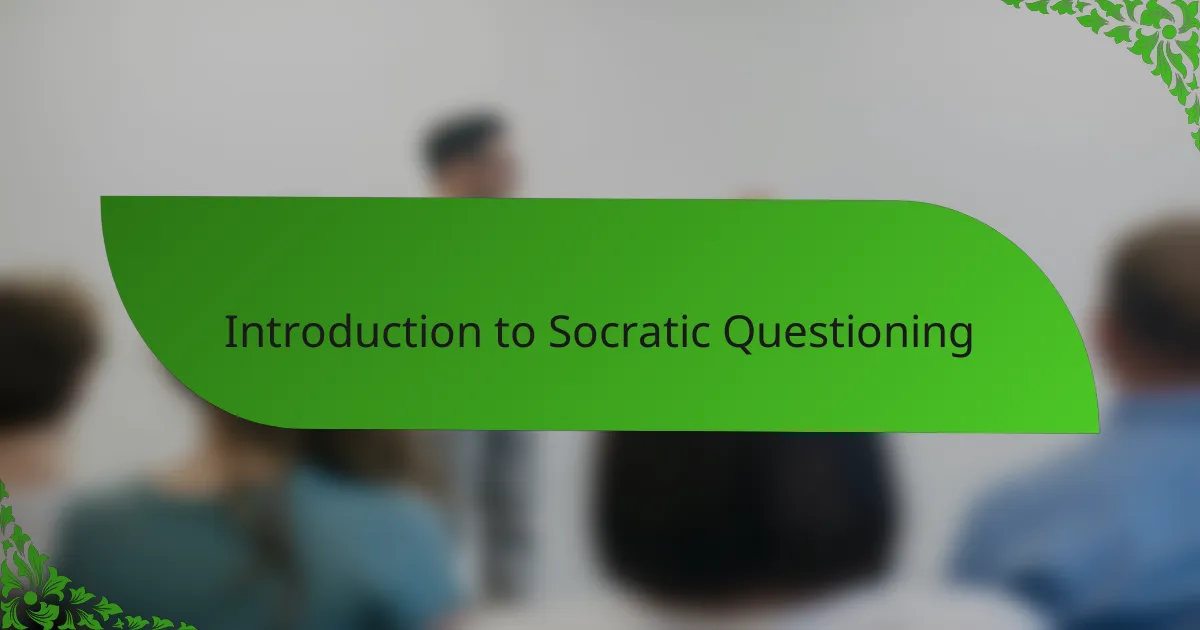
Introduction to Socratic Questioning
Socratic questioning is more than just a teaching technique; it’s a way of thinking that encourages deep reflection. I recall the first time I used it in class—I asked a simple question, and suddenly the room buzzed with curiosity and thoughtful debate. Have you ever noticed how a well-placed question can open up new perspectives?
What fascinates me is how Socratic questioning invites students to challenge their assumptions rather than accept information passively. It’s like guiding them on a journey where every answer leads to another question—sparking insight and genuine understanding. Don’t we all learn best when we’re actively involved in discovering the truth?
In my experience, this method creates an atmosphere where students feel safe to explore ideas without fear of being wrong. It transforms teaching into a collaborative dialogue rather than a one-way lecture. Isn’t that what true learning should be about?
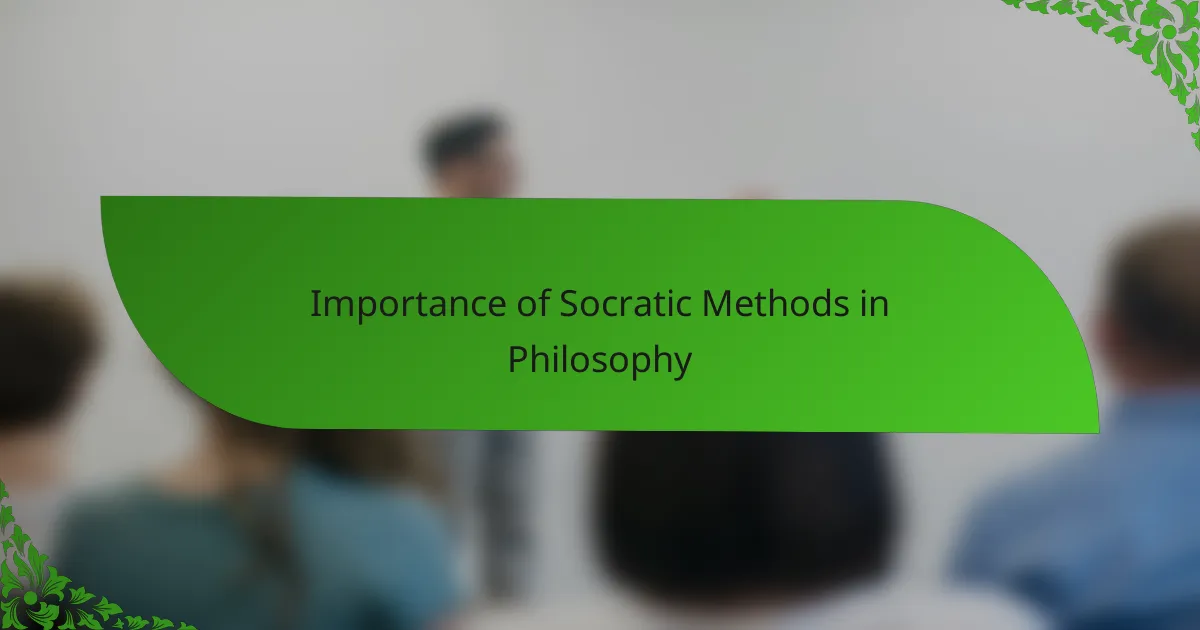
Importance of Socratic Methods in Philosophy
The importance of Socratic methods in philosophy lies in their unique ability to cultivate critical thinking. I remember moments when students, initially hesitant, began to question their own beliefs after just a few probing questions. Isn’t it remarkable how these exchanges encourage a deeper understanding rather than surface-level memorization?
What strikes me most is how this method nurtures intellectual humility. By constantly challenging ideas, both students and teachers recognize the limits of their knowledge, opening the door to continuous learning. Have you ever felt that sudden shift when a simple question reveals how much there is still to explore?
Ultimately, Socratic questioning transforms philosophy from a static body of facts into a dynamic, living conversation. I’ve seen classrooms come alive when students realize they’re not just absorbing information—they’re actively shaping their own perspectives. Doesn’t that shift make philosophy feel more relevant and exciting?
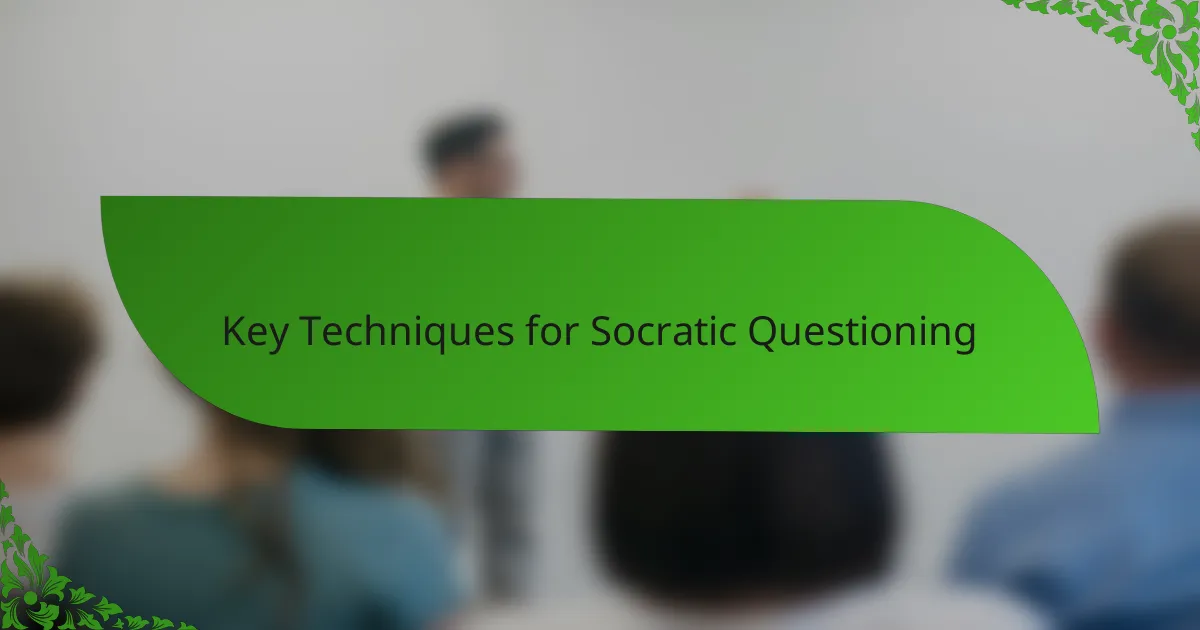
Key Techniques for Socratic Questioning
One technique I find essential is asking open-ended questions that invite exploration rather than simple yes-or-no answers. Early in my teaching, I noticed that when I shifted from asking for facts to encouraging explanations, students started to delve deeper and express ideas they hadn’t considered before. Have you ever tried nudging a student to think beyond the obvious and watched their curiosity ignite?
Another key approach involves gently challenging assumptions to prompt reflection. I recall a moment when a student confidently stated a belief, and my follow-up question made them pause and reconsider their viewpoint. That pause, that spark of doubt, often leads to meaningful breakthroughs in understanding. Don’t we all learn best when our beliefs are stretched a little?
Finally, I make it a point to listen carefully and respond thoughtfully, creating a respectful space where students feel heard and valued. This dynamic encourages them to take risks with their ideas without fear of criticism. Isn’t that kind of environment where true dialogue and growth happen?
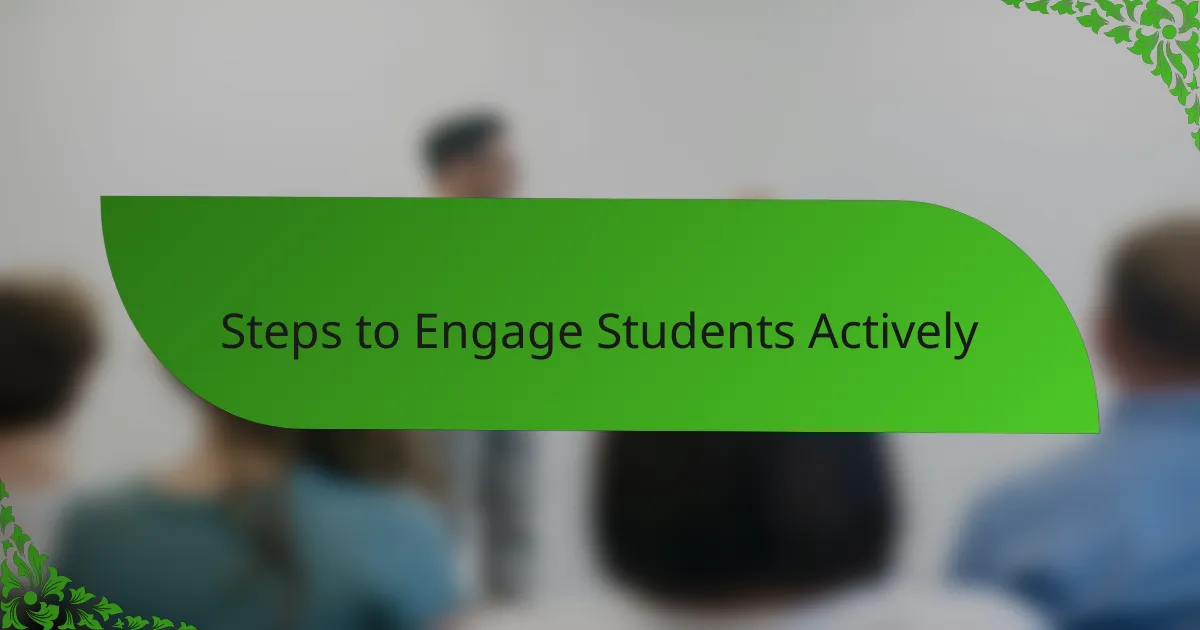
Steps to Engage Students Actively
Getting students to actively engage requires thoughtful preparation and a willingness to let go of control. When I begin a session, I intentionally pose questions that are open enough to invite multiple viewpoints but focused enough to keep the discussion grounded. Have you noticed how framing a question just right can stir curiosity and make students lean in with genuine interest?
One step I never skip is encouraging students to build on each other’s ideas. Early on, I realized that when students hear their peers’ thoughts being valued, they feel more confident contributing their own. It’s like watching a conversation stretch and expand—a clear sign the learning is happening collectively, not just inside individual heads.
Lastly, I pay close attention to pacing—knowing when to let silence hang a bit or when to nudge the group forward. There was a time I rushed through questions, and the dialogue sputtered. Learning to listen for those natural pauses has made all the difference. Don’t you think sometimes the best insights come from moments of thoughtful quiet?
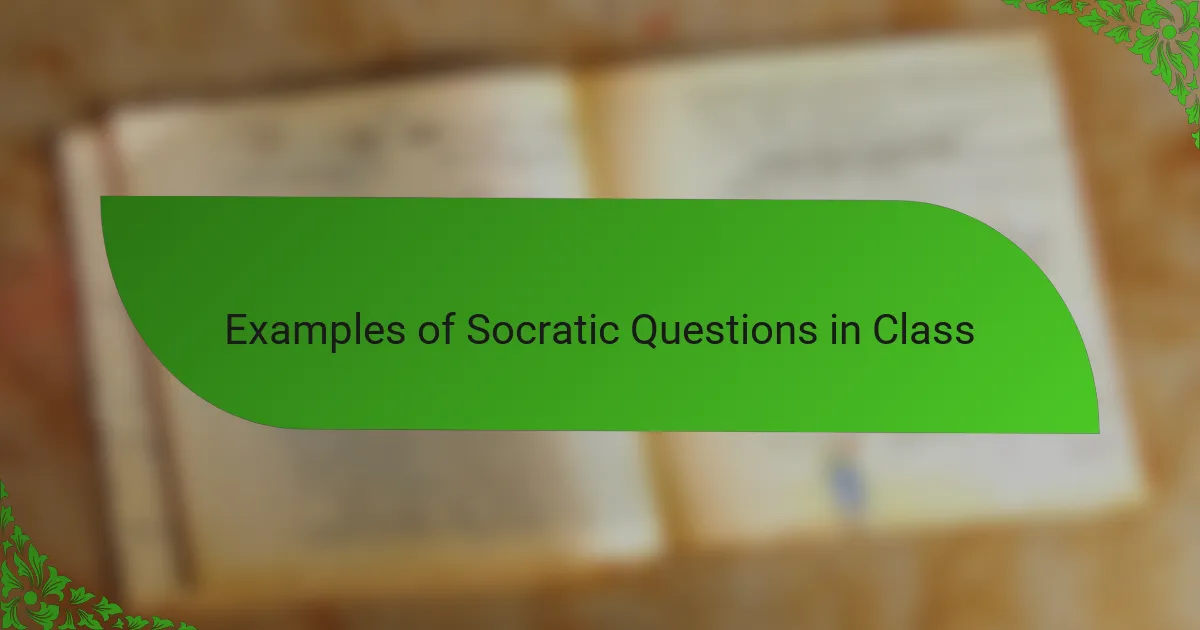
Examples of Socratic Questions in Class
In one memorable class, I asked, “What do you mean by justice?” instead of offering a definition. The room shifted immediately—students began unpacking their assumptions, trying to articulate something often taken for granted. Have you ever noticed how such a simple question can reveal such a complex web of ideas beneath the surface?
At times, I push further by asking, “Why do you think that is true?” or “Can you give an example to support your claim?” These prompts encourage students not only to state opinions but also to justify them, fostering a habit of critical reasoning. I’ve seen timid students transform into confident thinkers through these probing questions.
Sometimes, I challenge their ideas gently with questions like, “What might someone who disagrees say?” or “Is there another way to see this?” These inquiries nudge students toward empathy and broader perspectives. Isn’t it fascinating how a heartfelt question can open the door to deeper understanding, even in the most reluctant learners?
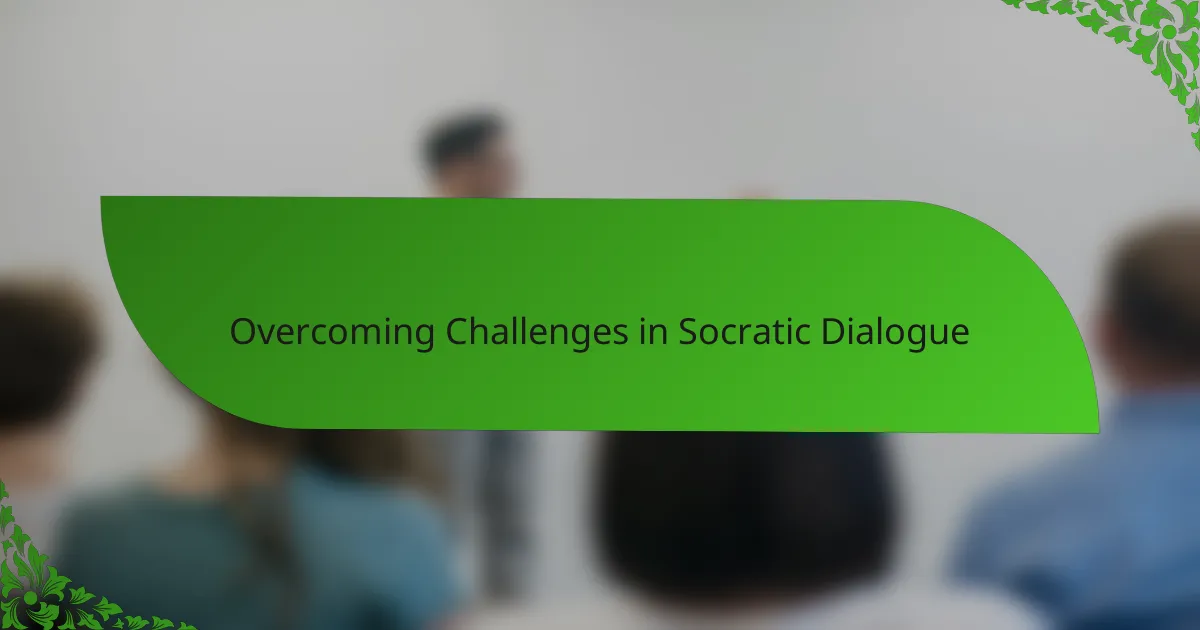
Overcoming Challenges in Socratic Dialogue
Overcoming the initial resistance to Socratic dialogue can be tricky. I’ve had students who felt uneasy sharing their thoughts, worried about being judged or saying the wrong thing. What helped was creating a classroom vibe where curiosity, not correctness, was the goal—a space where it’s okay to stumble because that’s where learning truly begins.
Sometimes, the challenge lies in managing the flow of conversation. Early on, I struggled to keep discussions from veering off track or one student dominating the dialogue. I found that gently steering with follow-up questions and inviting quieter voices to contribute balances the dialogue, fostering a richer and more inclusive exchange. Doesn’t it feel rewarding when everyone gets a chance to think aloud?
Another hurdle is that deep questioning can feel uncomfortable, even frustrating, for both students and teachers. I remember a session when the questions kept circling without quick answers, and the tension in the room was palpable. Yet, hanging in there led to a breakthrough—watching students’ faces light up as they connected the dots reminded me that patience is essential in this process. Have you ever experienced that moment when persistence turns confusion into clarity?
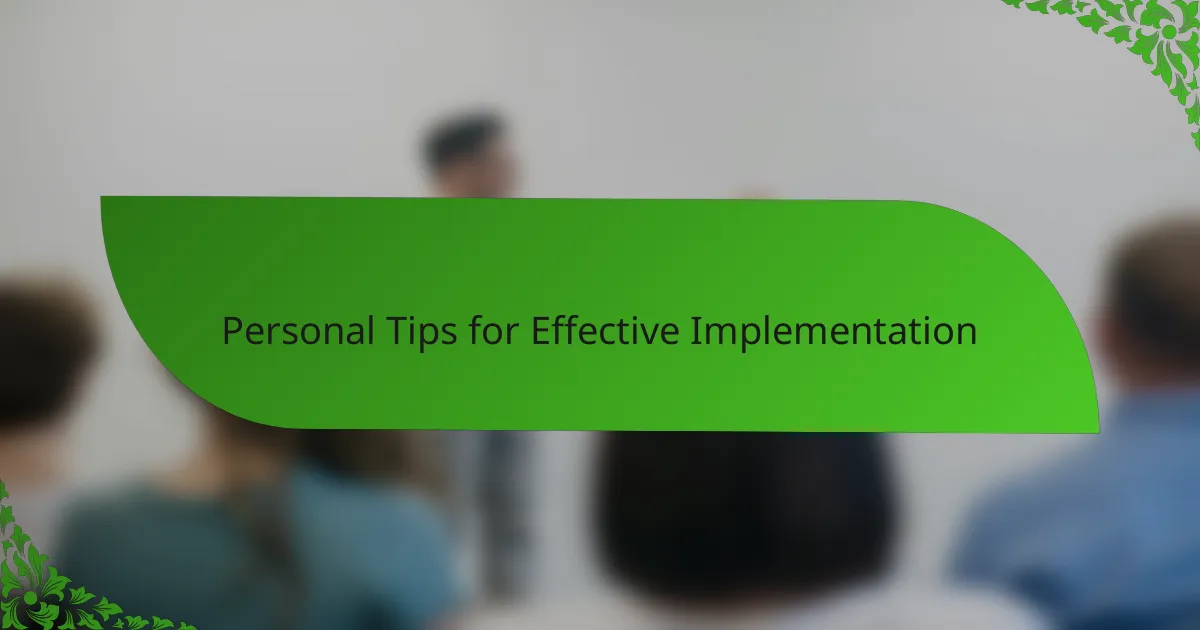
Personal Tips for Effective Implementation
One thing I’ve learned is to start small—introducing Socratic questioning gradually rather than diving in full force. Early on, I tried pushing too hard, and it felt like students were swimming against the current. Have you ever noticed how easing into a new approach allows trust and curiosity to build naturally? That patience made all the difference in creating an open dialogue.
I also make it a point to tailor my questions to the group’s mood and energy. There were times when I sensed the class was overwhelmed, so I shifted to lighter, more inviting questions before steering back into deeper territory. Doesn’t adapting on the fly keep the conversation alive and inclusive? In my experience, this responsiveness helps maintain engagement without pressure.
Finally, I try to model genuine curiosity myself. When I express doubt or admit I don’t have all the answers, students seem to relax and open up more. I remember a moment when my honest “I’m not sure—what do you think?” sparked a lively debate that no scripted question could have prompted. Isn’t honesty in teaching the best way to invite authentic exploration?